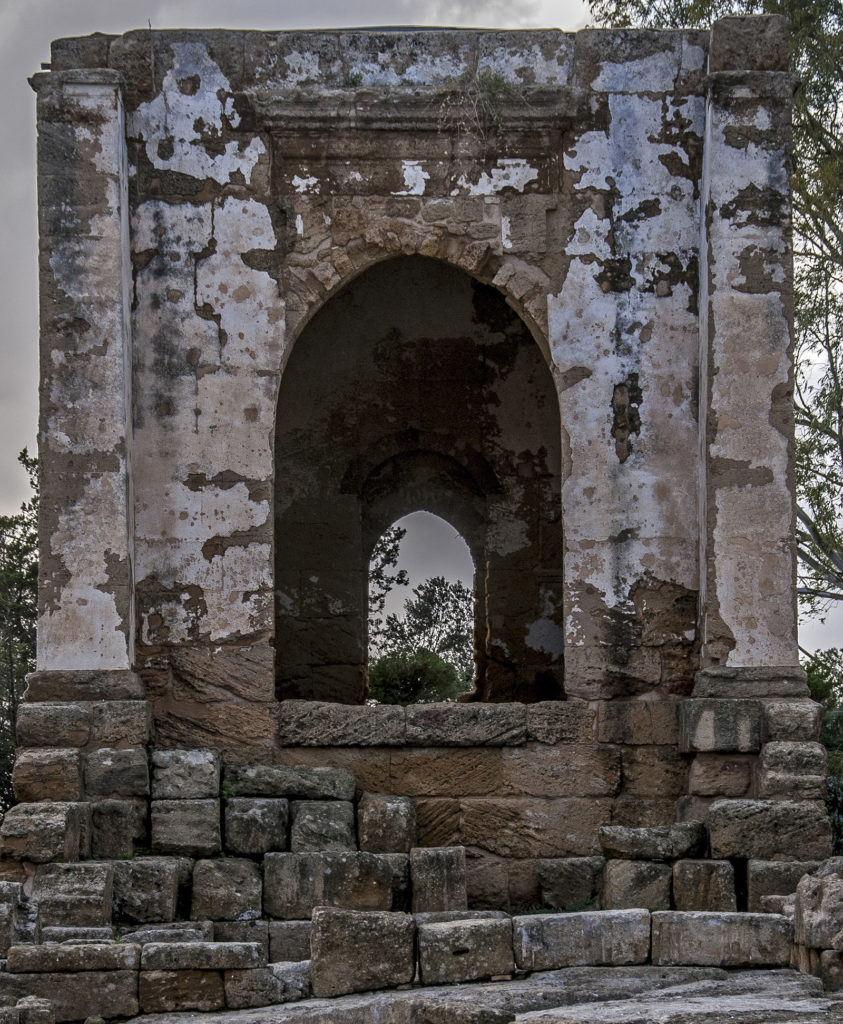The Oratory of Phalaris still has traces of its original colour: the building was probably covered with white stucco painted on the side walls and according to Hellenic tradition, metopes and triglyphs that ran on the frieze would have been blue and red.
A triumph of bright colours, lit by the warm Agrigento sun.

In the Roman Empire, the custom of transforming the buildings of the Bouleuterion into Odeon spread in many cities of Magna Graecia.
Let’s close our eyes and enter the Odeon in Agrigento, where a competition of music and poetry is taking place.
The intimate room and the roof allow us to hear the verses of the poems distinctly, while our thoughts begin to wander accompanied by notes of the melodies…